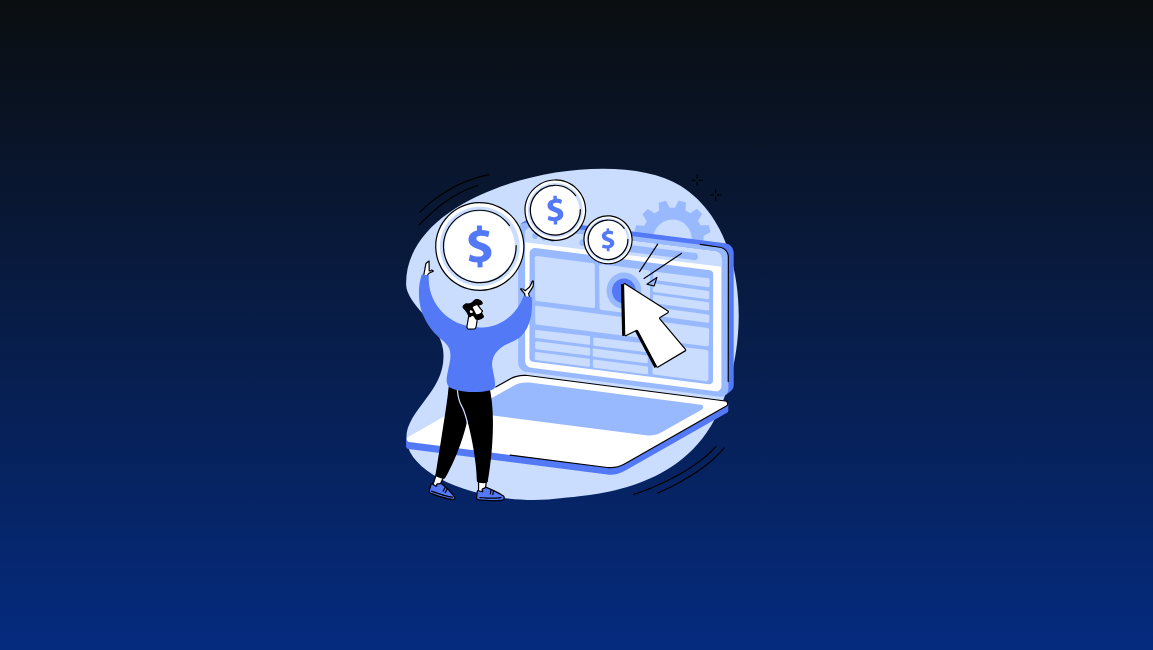“Time is money!”
We’ve all heard this phrase before, haven’t we? It stands especially true in business contexts: if you save time, you save money.
Now, there are different ways to save time and money in your business. Here at Alloy, though, we understand only one (major) way that we can deeply discuss: automating ecommerce tasks to save 500+ hours a year.
Let’s take a deeper look at ecommerce automation and how it can help your business.
What Is Ecommerce Automation?
Ecommerce automation is the process of using tools and technologies to automate ‘currently manually done’ repetitive tasks in your ecommerce business.
For example, with automation, you can create workflows to update inventory across your business automatically, auto-send follow-up abandoned cart emails or messages, auto-tag customers for email marketing, prioritize customer support tickets, manage order fulfillment updates, and more.
Overall, ecommerce automation helps your business in two major ways:
- Save time. Ecommerce automation gives you more time to grow your business instead of spending it doing repetitive tasks manually. You can focus on developing new products, increasing conversion rates, improving customer loyalty, bettering marketing strategy, boosting customer retention, and more.
- Better work quality (fast!). Manual work is always prone to human errors. With proper automation in place, you can eliminate human errors and execute tasks super-fast.
How Ecommerce Brands Use Automation
Some context: Alloy is an automation platform for ecommerce businesses, just like Zapier is for general businesses. So, naturally, we see how and how efficiently Alloy-using ecommerce brands implement automation.
And Opte and Lick are two brands that use automation so well that you can probably extract insights from their processes.
Opte
Opte is a skincare technology company selling high-end, patented serum and wands through their website. Each product retails for $599, so Opte gives a lot of attention to each customer.
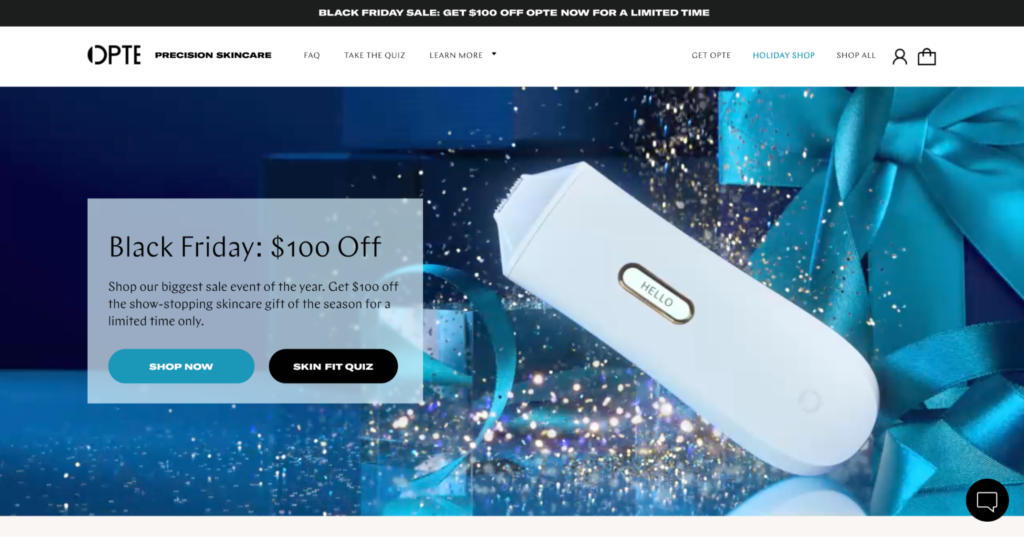
However, focusing on each customer manually used to eat up a lot of their time. Opte had a full-time employee uploading data concerning order syncing and returns between Shopify, Google Sheets, Typeform, and Gorgias. Still, it became overwhelming and led to delays in internal communication, especially during holidays when their order volume was spiking.
Then, they discovered Alloy automation.
They placed proper workflows to sync their user data across all platforms, allowing data to stream into their centralized concierge spreadsheet in real-time. This meant they could analyze and contact their customers to offer the most customized service. Not only that, but any returns requests and reason codes were synced automatically into their customer support software, which allowed Opte to analyze and minimize returns.
Lick
Lick sells paint and wallpaper. Customers can order samples of paint colors and wallpaper, and if they like them, they can order the full product. Lick wanted to generate reports that showed how their samples performed automatically and those that resulted in paying customers.
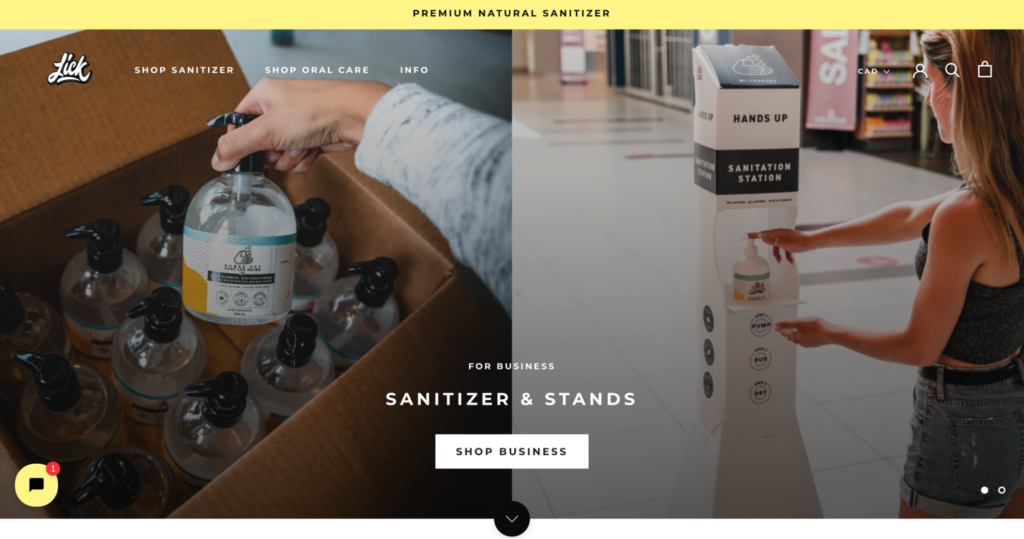
They wanted to know how many customers ordered samples, how many then bought the product, and how many customers bought the full product without getting a sample.
With automation, they were able to sort out a great deal of their reporting.
Lick was able to optimize their sample strategy and determine which samples generated more sales. The automation not only helped them get accurate, insightful data but also helped save Lick over 12 hours a week.
10 Workflows That Will Save You 500+ Hours
Now that you know how ecommerce brands benefit from and use automation, it’s time for you to get started.
Here are 10 starter ecommerce workflow automation that will save you a massive 500+ hours for your Shopify business:
1. Notify staff via email and tag fraudulent orders.
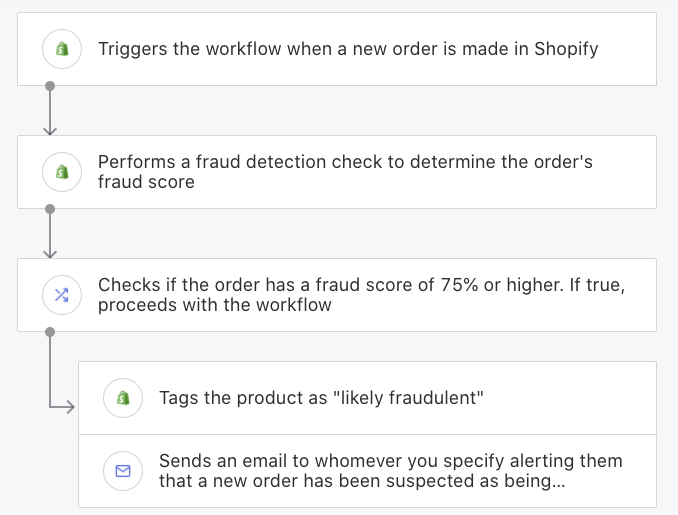
Staying one step ahead of potential fraud is crucial. And this automation is triggered when a new order is made in Shopify. First, it performs a fraud detection check to discover the order’s fraud score — it checks if it’s over 75 percent. If it is, the workflow proceeds by tagging the product as “likely fraudulent.” It then sends an email to a specified person on your team, alerting them of the suspected order.
2. Segment customers into mailing lists by Shopify tags.
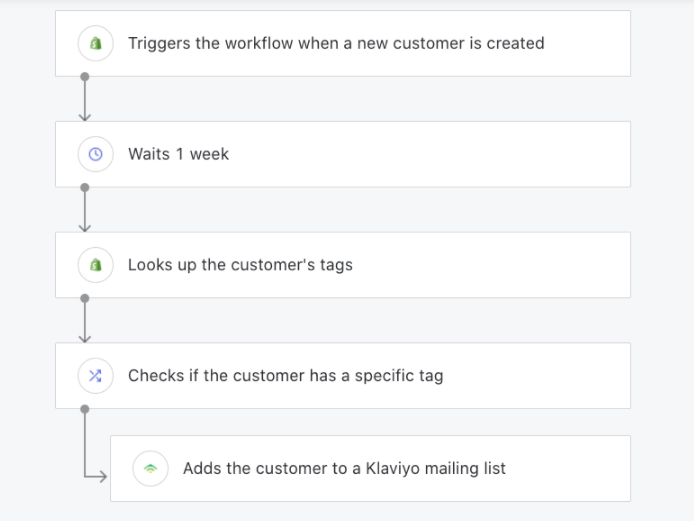
You can set up workflows to automatically tag customers into specific mailing lists based on data in Shopify. The workflow is triggered when a new customer is created. It then waits one week and looks up the customer’s tag. If the customer has a specific tag, the customer is automatically added to a Klaviyo mailing list.
3. Internal notification for unfulfilled orders.

Sometimes, orders get missed, especially if it’s busy. Not with this automation! It triggers the workflow when a new Shopify order is placed. It waits for 5 days, then checks if the order status is unfulfilled. You then get an internal email notifying you of it.
4. Daily update for new Shopify orders.
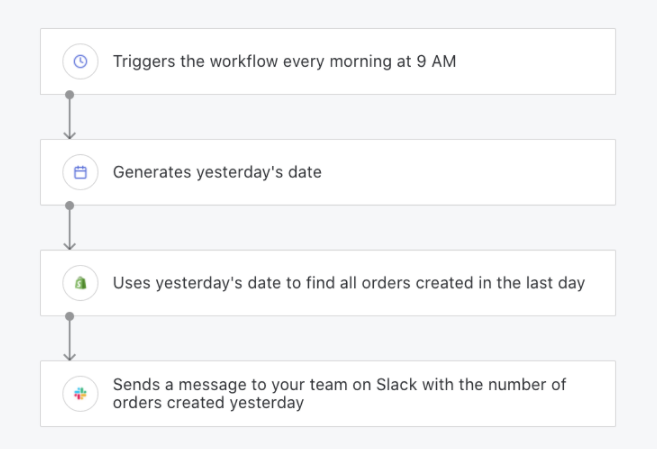
A simple way to keep track of all the orders from the previous day and notify your team on Slack! The workflow is triggered every morning at 9 AM. First, it generates yesterday’s date and uses it to find all orders created within the last day. It then messages your team on Slack with the number of orders created the previous day.
5. If a Shopify order has an order note, alert the Slack channel.
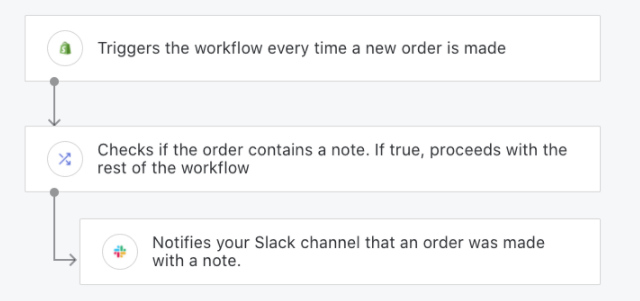
No more missed notes on orders. This workflow is triggered every time a new order is created. It checks if the order contains a note, and if it does, you get notified in your Slack channel.
6. Manage catalog and SKUs from a spreadsheet.
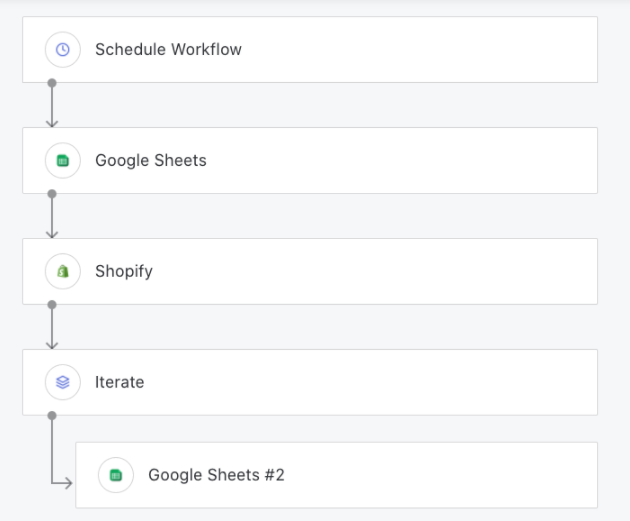
If you have a store with large catalogs, updating large amounts of product information on Shopify can be time-consuming. This workflow triggers once per day and appends product information to a Google Sheet so it can then be edited and re-uploaded to your Shopify store.
7. Create Asana tasks when Shopify inventory is low.
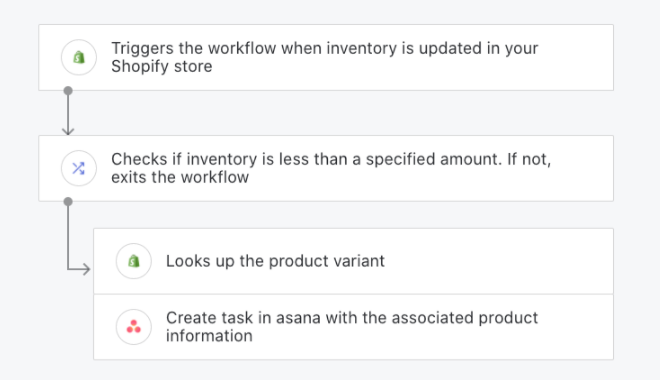
Save time on manually checking your inventory levels and creating Asana tasks based on it. When the inventory in your Shopify store is updated, the workflow is triggered. First, it checks if inventory is less than your specified amount. If it isn’t, it exits the workflow. If it is, it looks up the product variant and creates a task in Asana with the associated information.
8. Pull tracking number/order status into Gorgias.
![]()
Gorgias is a customer service platform, and ShipBob is an ecommerce fulfillment solution. You need to be using both to use this workflow.
This workflow is triggered when an order is shipped with ShipBob. It creates a new ticket in Gorgias that notifies the customer that their order is shipped.
9. Recover abandoned carts with discount code

Send abandoned cart emails for abandonment recovery with this workflow. It looks for abandoned carts throughout the previous week, goes through all abandoned carts, and creates and sends a discount code through email to each customer to increase conversions.
10. Add newly paid order line items to Google Sheets.

When a new order is paid, the workflow runs through every line item and adds the data you want to the Google Sheet.
Automation is easier than it sounds
If you think that automating your ecommerce workflow is complicated, it’s really not! Automation is far easier than it sounds, and there are many tasks you can automate based on the Shopify apps and ecommerce tools you use most.
The biggest ecommerce businesses save hundreds of thousands of hours using the workflows mentioned above; you’ll probably save hundreds, considering yours is a small ecommerce store.

